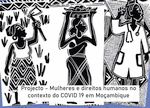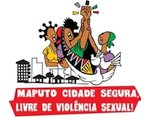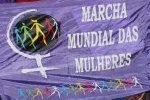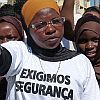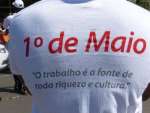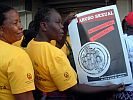The justice delivery system: a crossroads
by Conceição Osório
Published in: Outras Vozes, Suplemento do boletim n° 3, July 2003
An analysis of the justice delivery system in Mozambique cannot be made without taking account of two fundamental periods in the country’s recent history. The first period relates to the creation of a people’s democracy based on a philosophy of the collectivisation of resources that assumed a concept of human rights rooted in a broader perspective of economic and social rights, with political and civil rights subordinated to collective interests. That period lasted from the time of Mozambique’s independence in 1975 to 1990 and was characterised by the existence of a constitution that attributed equality and rights to citizens under the political and ideological guidance of a vanguard party.
With regard to the justice system, that period was exemplified by the creation of a justice delivery system that sought to incorporate processes of conflict resolution based on the people into a modern/western model of a justice delivery system so that these were legitimated and integrated in the system. An example of this was the creation of the people’s tribunals whose ultimate formal purpose was to provide citizens with universal access to justice. They in fact were shaped by a concept of justice and conflict that derived from the prevailing political model. One result of this was the conciliation (or attempted conciliation) of a justice delivery system structurally based on exclusion, with a proposed political system that predefined a conception of conflict, of justice and of “order”, thus making it possible to legitimise the ideological nature of the State.
Thus, during the first 15 years after independence, the human rights of citizens were shaped by the creation of the “new man” that simultaneously included the negation of specific cultural attributes of traditional society and the definition that the political powers made of basic rights.
With regard to the human rights of women and their access to justice, we are faced in that period with a situation riddled with ambiguity. The creation of people’s tribunals (within the framework of the justice delivery system), the social importance given to the Organisation of Mozambican Women and the prevailing political discourse favouring emancipation allows us to visualise the exercise by women of their human rights and their increased access to the formal processes of justice. However, the political discourse and the courts (through the practice of their agents) expressed a certain conception of women’s rights whose source of legitimacy lay in the patriarchal model. Although attenuated by the political strategies for equality between men and women, the underlying norms regulating gender relations continued to legitimise male superiority.
This situation is particularly clear when it is noted that at the same time as the political bureaucracy fought against formative practices in traditional society (such as bride price), what is regarded as modern “normality” in gender relations remained intact, in other words women and men were expected to play the social roles and functions formed by inequality. For that reason, the draft family law prepared in 1978 that sought to translate the equality proclaimed in the discourse into legal practice was repeatedly delayed and subjected to successive and peculiar impasses.
The introduction in 1990 of the new constitution and the progress of the talks that put an end to the armed conflict in 1992 led to a change in the philosophy and in the exercise of human rights. This corresponds to what is regarded as the second period in the history of the justice delivery system in Mozambique.
Individual political and civil liberties, expressed clearly in the emergence of independent media and of political parties, as well as the free practice of law, culminating in the first multi-party elections in 1994, are important dimensions to be taken into account in the new political system.
The separation of powers and the independence of the judiciary were particularly important for the renewal of the independence of the judicial system, as well as the creation of civil society organisations dedicated to the defence of the rights of citizens.
However, the exercise of human rights in Mozambique is still constrained by a series of factors, among which the following are outstanding:
- The number of judges with specific training in magistracy is very small. The Higher School of Magistracy dedicated to training at this level was only established two years ago.
- The number of law graduates falls far short of the social demand, and very few of them exercise functions in the institutions of justice.
- The justice system is very cumbersome and bound up with red tape; it has outdated laws and justice delivery mechanisms, and high levels of corruption that hamper access by citizens to justice. Although the justice system is formally independent of the political powers, the people in senior posts in the magistrature are appointed and/or ratified by the ruling party.
- The fact that criminal investigation is the responsibility simultaneously of two institutions (the Public Prosecution Service and the Home Office) hampers the design of strategies to combat crime and transparency in the justice delivery system.
- The training of police officers is poor, and many of them are ignorant of the law and treat citizens in an authoritarian and inhuman manner.
- Communication among the various levels of courts and between these and human rights organisations is often deficient.
The poverty of the majority of the population makes the situation worse for people who are demanding justice: the “draining” of State capacity and of institutions dedicated to the defence of citizens naturally leads to a situation where the majority of the people have no access to the formal system of justice. The renewal of traditional processes for conflict resolution happens instead.
By returning the power to do justice to the local and informal levels, this situation apparently rehabilitates the normative cultural traditions and in fact legitimates arbitrary actions that reproduce old and produce new forms of exclusion. An initial and important manifestation of exclusion is the distance placed between citizens and the formal system of justice (there are other factors besides poverty that must be analysed as a matter of urgency), which leads them to seek other “places” for the resolution of conflicts. In the light of the impossibility of the justice system responding to social demands, both in terms of law and in mechanisms of access, what happens is people seek “private” level conflict resolution, to the detriment of the public level.1
In mentioning the old and the new forms of exclusion found in the justice delivery system, it is inevitable that we take a feminist approach to the problem2 not just because women are the principal victims of the poor functioning of justice, but mainly because the power relations between men and women violently express inequality in the current situation of social anomy in the country today.
If women and men have the same rights and possibilities to exercise them in the current judicial and political reality, we must take into account a series of constraints that affect women in particular, the first and most visible of which relates directly to the prevailing social and cultural model.
This means in the first place that the inequality underlying gender relations that are produced and shaped primarily within the family, affects the conception of the legitimacy of the conflict and of the reason for making it public. This is the case, for example, of violence against women within the family that remains a private affair, despite progress.
A second level of constraints, more subtle but no less illuminating of discrimination against women in our country, may be found at the institutional level, where appeals are made to admit women to the public sphere, for instance, while their participation is governed by party logic and conformity with a model of behaviour that maintains the existing order. An example of this is the debate around the family law. It began half a dozen or so years ago and has been punctuated by numerous diversions, some grotesque others almost tragic. It reveals the huge difficulties that the struggle for equality faces.
As regards the justice delivery system, this struggle requires a combination of different strategies. The existence of a body of law that guarantees legal equality between women and men must be coordinated with the creation of mechanisms that allow women access to the system and with the transformation of a concept of justice still grounded in discriminatory images and practices.
Notes:
- A news story recently published in the media about the search for a traditional doctor to help in the disclosure of a theft in a public department should not be viewed as bizarre or exceptional, but rather as the legitimisation of an entity that has been endowed with the power to judge.
- We use the concept of feminism in this article as a tool for analysing the situation of women’s rights.







 Information in English
Information in English